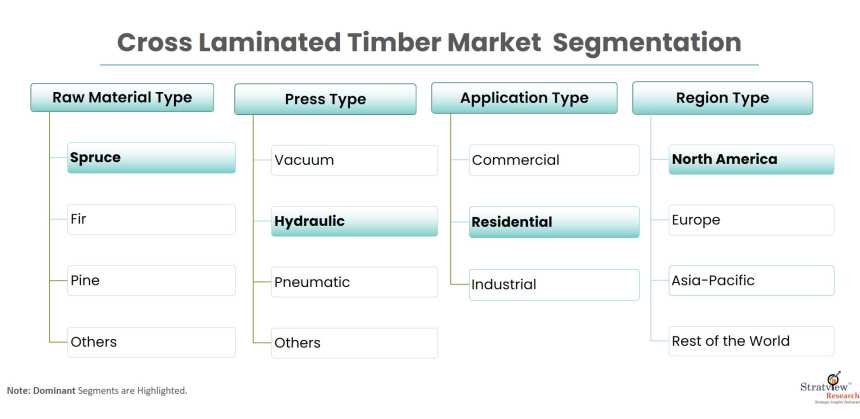Cross-Laminated Timber (CLT) is an engineered wood product gaining significant traction in the global construction industry. Made by adhering layers of solid wood planks perpendicularly with adhesives, CLT offers superior strength, dimensional stability, and environmental benefits compared to traditional building materials. This article delves into the current state and projected growth trajectory of the CLT market, analyzing the key drivers, challenges, and future prospects.
Market Size and Growth Forecast
The global CLT market is experiencing robust growth, driven by a confluence of factors. According to Stratview Research, the global cross laminated timber market size was valued at USD 1.56 billion in 2023 and it is expected to reach USD 2.99 billion in 2028, growing at a CAGR of 13.89% during the forecast period of 2023-2028.
Factors Fueling Market Growth
Several key drivers are propelling the CLT market forward:
- Sustainability: CLT's eco-friendly credentials are a major growth factor. Wood is a renewable resource, and CLT utilizes sustainably managed forests, promoting carbon sequestration.
- Superior Building Properties: CLT offers exceptional strength-to-weight ratio, dimensional stability, and seismic resistance, making it suitable for various construction applications.
- Faster Construction: CLT panels facilitate quicker construction times compared to traditional methods due to prefabrication and easier on-site assembly.
- Design Flexibility: CLT's versatility allows for creative architectural designs, enabling the construction of complex and visually appealing structures.
- Government Regulations: Stringent environmental regulations in developed economies are fostering a shift towards sustainable building materials, favoring CLT adoption.
Market Segmentation
The CLT market can be segmented based on various factors:
- Raw Material Type: Spruce, Fir, Pine, Larch, and Others.
- Press Type: Hydraulic, Vacuum, Pneumatic, Nails, and Others.
- Application Type: Residential, Commercial, and Industrial.
Regional Landscape
The CLT market exhibits a geographically diverse landscape:
- Europe: Currently leads the global market, driven by a long-standing tradition of wooden construction and supportive government policies.
- North America: Experiencing rapid growth due to increasing awareness of CLT's benefits and growing demand for sustainable construction.
- Asia Pacific: Emerging as a promising market with significant potential due to rapid urbanization and government initiatives promoting green building practices.
Challenges and Opportunities
Despite the positive outlook, the CLT market faces certain challenges:
- Limited Production Capacity: The current production capacity of CLT manufacturers needs to expand to meet the growing demand.
- Lack of Standardization: Standardization in building codes and regulations across different regions is crucial for wider CLT adoption.
- Higher Initial Costs: CLT can have a slightly higher upfront cost compared to conventional materials, though life-cycle cost benefits can offset this.
However, the market presents exciting opportunities:
- Technological Advancements: Innovations in production processes, such as automation and digitalization, can enhance efficiency and bring down costs.
- Focus on Sustainability: Growing environmental concerns will continue to drive the demand for eco-friendly building materials like CLT.
- Public-Private Partnerships: Collaboration between governments and the private sector can incentivize CLT adoption through subsidies and favorable regulations.
Future Outlook
The CLT market is poised for significant growth in the coming years. Rising environmental consciousness, coupled with the growing demand for sustainable and efficient construction methods, will continue to fuel market expansion.
Here are some anticipated future trends:
- Increased Focus on Prefabrication: Prefabricated CLT panels will gain traction due to faster construction times and improved quality control.
- Development of Hybrid Construction Techniques: CLT will likely be integrated with other sustainable materials like steel and concrete for enhanced structural performance.
- Expansion into New Applications: CLT's use in bridges, transportation infrastructure, and even high-rise buildings is expected to increase.
Conclusion
The CLT market presents a compelling growth story driven by sustainability concerns, superior building properties, and increasing government support. While challenges like production capacity limitations and initial cost considerations remain, technological advancements and growing public awareness are paving the way for wider CLT adoption.





Comments